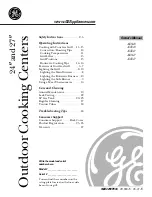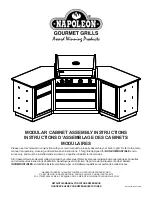
English
10
Electronic Speed and Impact Control (Fig. A)
The electronic speed and impact control allows the
use of smaller drill bits without the risk of bit breakage,
hammerdrilling into light and brittle materials without
shattering and optimal tool control for precise chiseling.
To set the speed dial
10
, turn the dial to the desired level.
The higher the number, the greater the speed and impact
energy. Dial settings make the tool extremely flexible and
adaptable for many different appli cations. The required
setting depends on the bit size and hardness of material
being drilled.
Overload Clutch
In case of jamming of a drill bit, the drive to the drill spindle
is interrupted by the overload clutch. Due to the resulting
forces, always hold the tool with both hands and take a
firm stance. After the overload, release and depress the
trigger to re-engage drive.
WARNING:
Drill may stall if overloaded causing a
sudden twist. Always expect the stall. Grip the drill
firmly to control the twisting action and avoid injury.
E-Clutch® System (Fig. A
)
In addition to the integral (mechanical) clutch, the
D
e
WALT
anti-rotation E-Clutch® system, offers technology capable
of detecting the motion of the tool. This feature senses the
motion of the tool and shuts it down if necessary. The red
indicator LED
11
illuminates when the E-Clutch® System
is engaged.
E-Clutch® and Service Indicator LED
(Fig. A)
Your rotary hammer has two LEDs
11
, indicating the
E-Clutch® (ADC) function and a service indicator. Refer to
the table for more information on LED functionality.
lED Function
Description
Red
(permanently on)
E-Clutch
®
E- Clutch® is engaged.
Yellow
(permanently on)
service exceeded
Indicates that the tool needs
servicing. After 10 hours the
LED will flash (new lubrication,
hammer mechanism sealing).
Yellow
(flashing)
service required
Indicates that the tool needs
servicing within the next 10 hours
of use (new lubrication, hammer
mechanism sealing).
Operation Modes (Fig. H)
WARNING:
Do not select the operating mode when
the tool is running.
CAUTION:
Never use in Rotary Drilling or Rotary
Hammering mode with a chisel bit in the bit holder.
Personal injury and damage to the the tool may result.
Your tool is equipped with a mode selector dial
4
to
select the mode appropriate to desired operation.
symbol
Mode
Application
Rotary
hammering
Drilling into concrete
and masonry
hammering
only
Light chipping
Bit Adjustment
Chisel bit position
adjustment
To select an operating mode
• Rotate the mode selector dial
4
so that the
arrow points to the symbol corresponding for the
desired mode.
Fig. H
4
nOTE:
The arrow on the mode selector dial
4
must be
pointing at a mode symbol at all times. There are no
operable positions in between. It may be necessary to briefly
run the motor after having changed from 'hammering only'
to 'rotary' modes in order to align the gears or to postion
the chisel bit.
Indexing the Chisel Position (Fig. A)
The chisel can be indexed and locked into 24
different positions.
1. Rotate the mode selector switch
4
until it points
towards the
position.
2. Rotate the chisel in the desired position.
3. Set the mode selector switch
4
to the “Hammering
Only” position.
4. Twist the chisel until it locks in position.
Performing an Application (Fig. I)
WARNING: TO REDUCE THE RISK OF PERSONAL
INJURY, ALWAYS
ensure workpiece is anchored or
clamped firmly. If drilling thin material, use a wood
“back-up” block to prevent damage to the material.
WARNING:
Always wait until the motor has come to
a complete standstill before changing the direction
of rotation.
1. Choose and install the appropriate chuck, adapter, and/
or bit onto to the tool. Refer to
Bit and Bit Holder
.
2. Using the mode selector dial
4
, select the mode
appropriate to desired application.
Refer to
Operation Modes
.













































